The UIAA’s Summit Series explores a number of the world’s most iconic and challenging mountains and mountain ranges. Produced by the UIAA Medical Commission, they offer information on numerous areas including ascent profiles, acclimatization and preparation. The papers also offer links to live information and introduces other useful areas of UIAA expertise.
About Kilimanjaro
Strange as it may sound, Kilimanjaro (5895m/19650ft) in Tanzania is perhaps one of the most dangerous mountains in the world. Despite reliable weather and straightforward access, illness and injury are commonplace. Of the more than 40,000 visitors Kili attracts each year, between 50 and 75% turn back before reaching the summit. What’s the reason for this? In one word – altitude. Altitude presents humans with a host of problems. On Kilimanjaro ‘Kili’ the combination of cold, dehydration and acute mountain sickness seems to be responsible for turning most people back. Preventing these is the key to climbing the mountain.
While the Marangu, Rongai and Machame approaches see the majority of the traffic, the Lemosho Glades Route is proving to be an increasingly popular alternative. The reasons for this are simple – the route not only offers a beautiful trek through a range of stunning habitats, but it also enjoys an ascent profile that allows aspiring summiteers plenty of time to acclimatise. All in all, the Lemosho Glades Route offers one of the best ways to climb the mountain safely.
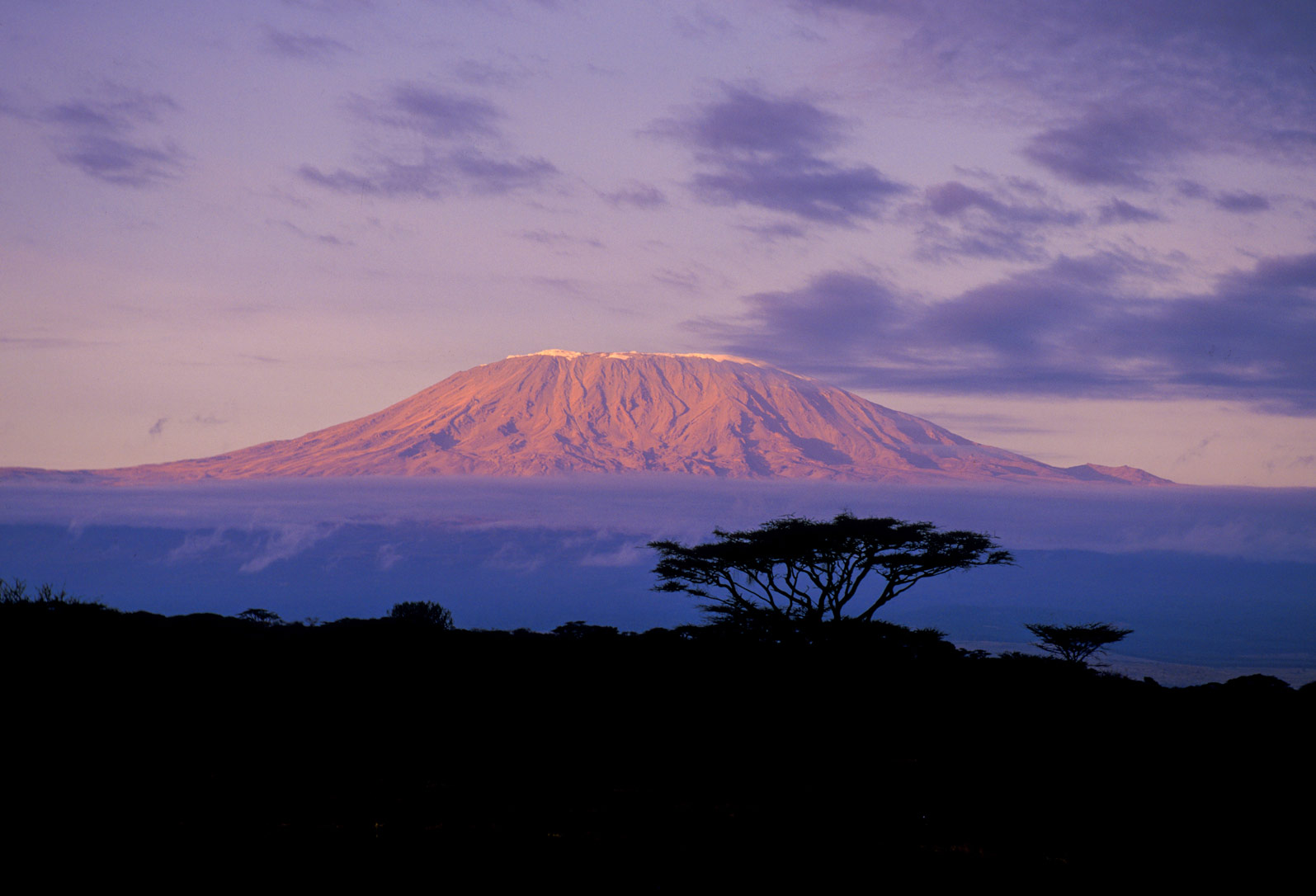
Ascent
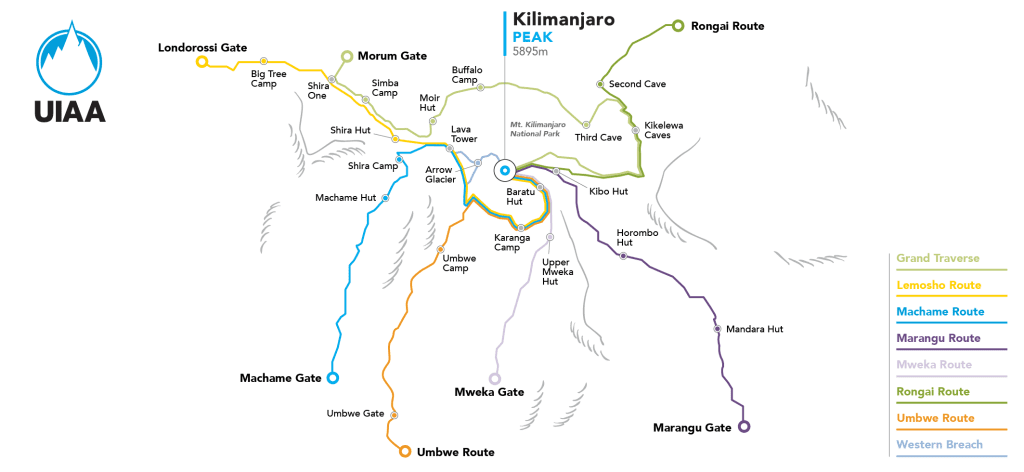
Access
The mountain is most easily accessed from the town of Arusha (3˚ 22̍ 20.5̎ S 36˚ 41̍ 40.1̎ E). Arusha is a 1-2 hour journey by from Kilimanjaro International Airport (KIA). The journey to the Londrossi Gate takes a further 3-4 hours along a mixture of paved and earth roads.
Duration
Between six and eight days to reach the summit.
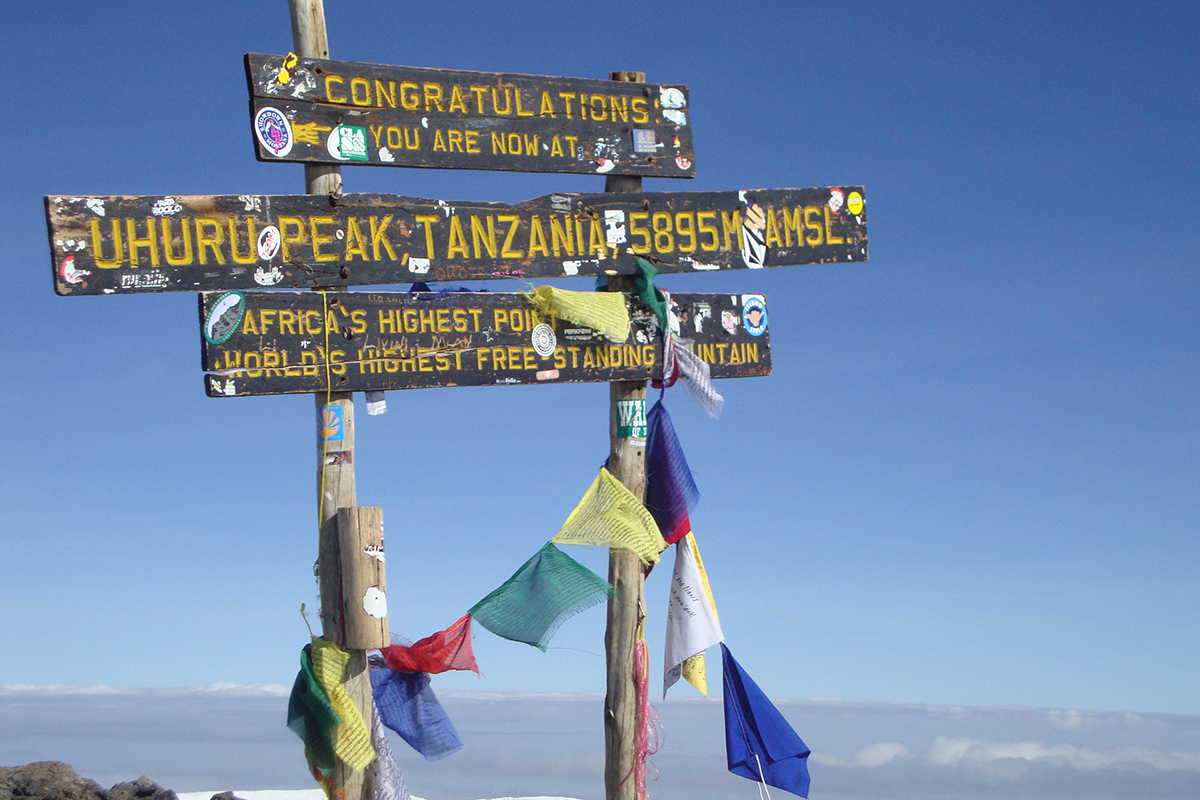
Route Description
The route begins close to the Londrossi Gate on the northern slopes of the mountain. Most trekking companies aim to start the route by the middle of the day. The first stage to Mti Mikubwa “Big Tree Camp” (2650m) is short and relaxing (2-4 hours). Despite walking in the warmest part of the day, ample tree cover and a gentle incline makes this an ideal way to start. However, in wet conditions progress will be much slower since the rough earth track can turn to mud after a few days of steady rain. During the second day the forest falls away and temperatures start to rise. Make sure you have a sun hat, drinking water and sun block in your day sack – you’ll need it. Expect to walk for 5-7 hours. Watch out for blisters – not only on the feet but also on the fingers too. A new pair of trekking poles can cause small, painful surprises.
At Shira Camp I visitors will have their first views of the mountain and the long day will have felt worth it. At 3350m, the altitude will be a problem for some – resting heart rates will be higher (70-90 beats per minute) and a pulse oximeter may show a fall in arterial oxygen saturation to below 90%. Please be aware that factors such as cold and/or dirty fingers may affect pulse oximeter accuracy. After a few hours, the first signs of AMS will appear in some. These may be commonest in the younger, fitter members of the group who’d raced ahead of everyone else. Victims will be quiet and withdrawn – complaining of a throbbing headache when prompted. The first night’s sleep at this altitude will often be a disappointment. Although second rate mattresses and cold sleeping bags will be blamed by some, the underlying reason for most is the altitude. The combination of periodic breathing and the increased need to urinate often leads to a broken night’s sleep.
The following morning, the first physical signs of altitude may be visible. It is common to see faces swollen and shiny with edema. Although this is sometimes linked to AMS, it rarely causes problems and vanishes in most by mid-morning. Fortunately, the journey to Shira Camp II (3850m) is a short one (2-4 hours). However, it’s easy to take the wrong path and head off to the north or east. Make sure that you stay close to your guides and porters.
At 3950m the next day’s journey to the Barranco camp looks like a flat walk. Sadly, a closer inspection of the map reveals a number of ridges blocking the way. Fortunately, these have their advantages. At 4500m the Lava Tower offers a good opportunity for some more acclimatisation. A few hours spent here before descending to Barranco Camp will be of enormous help later. Barranco Camp can also be reached from the southern Umbwe route. This is an excellent escape route for those with AMS, HAPE or HACE since altitude can be lost quickly and safely.
The first part of the next day is spent negotiating the Barranco Wall. Although steep in places, it’s safe and enjoyable. However, it’s not the place to take someone who’s struggling with AMS – either rest at Barranco Camp for a day or head down. On the Barranco Wall you’ll encounter groups on a shorter itinerary. Listen to them panting. Are they talking to each other? Are they enjoying the view? Probably not! They haven’t given their bodies a chance to acclimatise, but are still pushing on! At this point you’re allowed a smile to yourself. Karanga Camp splits up a very long day and it’s worth spending the night here.
The next day, an early start should see you at Barafa Camp by lunchtime. Food, water and sleep are now required. Summit day starts at midnight. Summit day is long but worth it. Most groups start around midnight and aim to reach Uhuru Peak by dawn. A slow and steady approach will get most to the top in 6-8 hours (please refer to the Environmental Conditions section). Thankfully, the descent is much quicker, and you should be back in camp by lunchtime. Unfortunately, the day is not quite over. There’s still 3-4 hours to go to Mweka Camp.
Acclimatisation
Acclimatising properly is a very important aspect of climbing Kilimanjaro. Since it is such an accessible peak and many novice climbers with little knowledge of altitude sickness attempt the peak each year, many suffer from acute mountain sickness (AMS). Some experience more serious (and potentially deadly) altitude-related problems including high altitude cerebral edema (HACE) and high altitude pulmonary edema (HAPE). It is very difficult to obtain reliable figures on mortality, but very reputable sources estimate approximately 30 deaths a year on the mountain, due almost entirely to altitude sickness. A slow climbing schedule that allows sufficient time to acclimatize is the most effective way to avoid altitude illness. If a member of the climbing team is thought to be experiencing altitude illness, it is imperative that they not move higher until the illness subsides. It is of the utmost importance to realize that descent to a lower altitude may be the best option, especially if symptoms worsen. Please refer to the UIAA medical videos linked at the bottom of this article for information on water disinfection and high-altitude sicknesses.
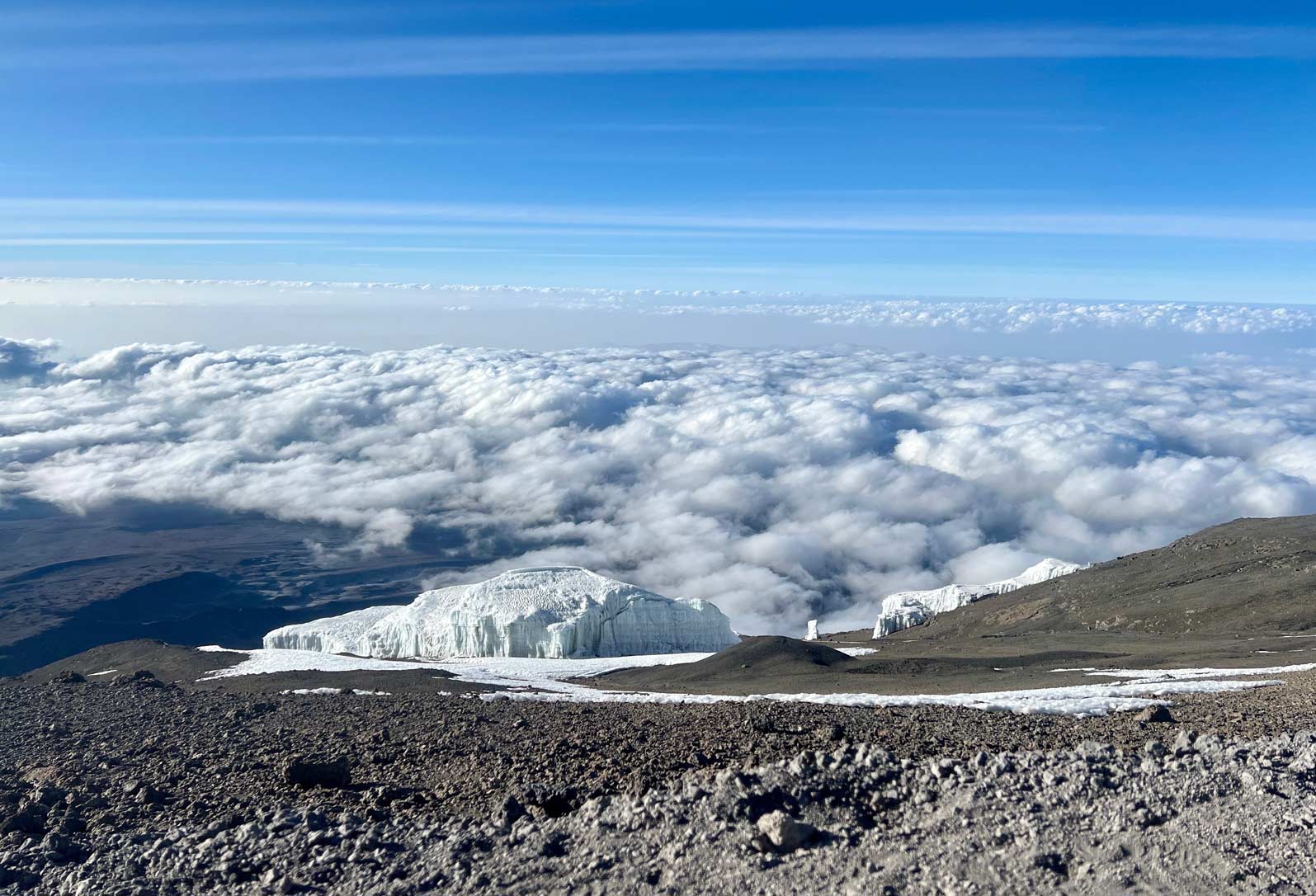
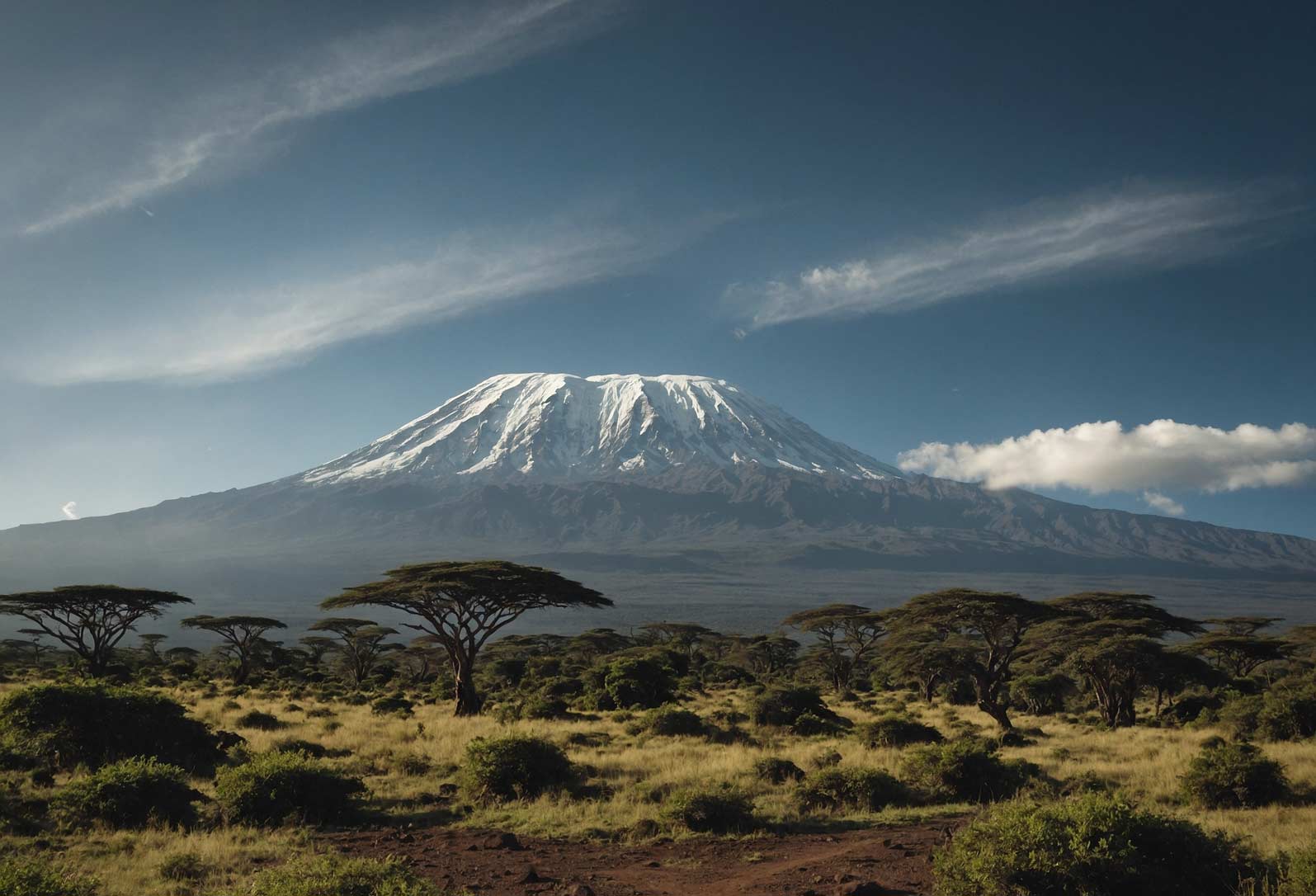
Water, Sanitation and Waste
Toilet facilities on Kilimanjaro are quite basic and often unsanitary. The park supplies wooden toilets at each camp for climbers to use. They are periodically moved but are not cleaned very often, if at all, making the experience somewhat less than ideal. Poor management of human waste, large numbers of visitors and the limited availability of water mean that there is a real risk of acquiring a viral or bacterial infection on the mountain. Despite this, the local kitchen teams are often magnificent and maintain an extraordinary level of cleanliness in difficult circumstances. In return we owe it to them to maintain a high standard of personal hygiene ourselves. Regular hand washing with anti-bacterial soap is vital. Many guide services are now carrying their own toilet tents with portable seats so that their clients can avoid having to use the public toilets.
As with other mountains, all rubbish must be carried off with you.
There is a clean water source at each of the camps. The porters and guides know where the water sources are in the camping areas, as they are the ones who collect water for the climbing team. The water is potable, but it is best to treat all water on Kilimanjaro before drinking it.
Essentials
Language
Kiswahili (Swahili) and English
Local Currency
Tanzanian Shilling (TZS)
Visa Requirements
For visa requirements for Tanzania:
https://www.visitzanzibar.travel/visas-and-requirements/
Documents
Climbers from most countries do not need to buy a Tanzanian visa in advance. They can be purchased upon arrival in Tanzania, but it may be necessary to present your yellow fever immunization card to obtain it. Permits are necessary for a climb of Kilimanjaro. Obtaining permits is an easy process, but unless traveling with a guided group taking care of the paperwork, count on several hours of waiting at the start of the climb.
Climbing Seasons
Weather on Kilimanjaro is unique for Africa. During the non-rainy seasons (January through mid-March and June through mid-October), the weather ranges from hot and arid equatorial conditions at low altitude to arctic conditions at high altitude. Almost no one climbs during the two rainy periods from early April to mid-June and mid-November through December. January through March is the warmest time of the year, while June through August is the coldest. Climbers pass through six major ecosystems en route to the summit, making for an unparalleled ecological experience. The wettest zone on the mountain is from 1800-2800m.
Conditioning
While Kilimanjaro is likely the technically easiest and most popular of the Seven Summits, it should not be underestimated. Summit day is very long, and the altitude is very high. Climbers attempting the peak need to be fit enough to walk uphill steadily for hours on end for several days running, but fitness must be complemented by proper acclimatization to altitude. Overnight camping in a tent is necessary on the route.
Nearest Hospital
Kilimanjaro Christian Medical Centre (in Moshi), Box 2240 Moshi Kilimanjaro Tanzania.
Tel: +255 272753616.
E: info@kcmuco.ac.tz
Technical Difficulty
Mainly walking, with short sections of easy scrambling on the Barranco Wall. Climbing harness, helmet and ropes are not required.
Dangers
Electrocution – Electrical connections and wiring in hotels should be treated with the utmost caution. Sockets are often poorly attached and the wiring in plugs can be loose. Switch off all sockets before inserting or removing plugs.
Evacuation
The local Tanzanian guides are knowledgeable, attentive and strong. If you’re able to walk they can get you off the mountain safely. Many have been trained in the diagnosis and treatment of life-threatening conditions such as HAPE and HACE. Importantly, they all know the importance of the mantra “Descend, Descend, Descend” in these situations. Most trekking companies carry a cylinder of supplemental oxygen or a portable hyperbaric chamber for those suffering from HAPE or HACE. Fortunately, Kili’s steep ascent profile and good paths make it possible to descend quickly. HAPE and HACE victims often improve quickly. Sometimes just a few hundred metres of descent is enough to reverse the effects of altitude. Many diagnosed with life threatening conditions reach the park gates eager to climb again.
If you’re organising a rescue make sure that the victim is accompanied by at least two people – one to guide and carry equipment and a second who can go for help in case there are difficulties. Encourage them to use trekking poles, especially if they’re slow and unsteady – they can make life a lot easier. Unfortunately, a helicopter rescue is not an option on Kili at this time. A rescue helicopter was available for emergency mountain rescue in 2018 but has now ceased operations. This service may start again in the future. Neither is there currently any organized ground mountain rescue on Kilimanjaro although the National Park Rangers will assist in terms of communication between manned camps.
For those who can’t walk, the only alternative is the portable stretcher. Stretchers are available at all Ranger stations and most camps higher on the mountain. Care should be taken in any stretcher use due to the nature of the ground. Most stretchers are the “McInnes” centre wheel design. In experienced hands these devices are lifesavers and can ferry the sick and injured to the park gates very quickly. Before leaving it is vital that the victim is warm and dry. Wet weather is common lower down the mountain and waterproofs are essential. Add an insulating mattress too – the ride can be a bumpy one. Water, food and a day’s medication are also essential. Finally, make sure that radio contact has been made with the park officials. This will ensure that there will be an ambulance ready and waiting.
Remember – guides and porters get sick too. Most who work on the mountain are from lowland villages and towns. Unlike those born at altitude these men and women lack genetic “advantages” and are just as prone to HAPE and HACE as anyone else. As employers and human beings, trekkers have a responsibility to treat their guides and porters as they would want to be treated themselves.
Communication
There is mobile phone service on the mountain, and most guides and porters will have a phone with them. Consider buying a local SIM card for your mobile phone to use while in Tanzania. You can buy cards and recharge minutes at any local store. Local hotels have Wi-Fi service for making internet calls with providers such as Skype. A satellite phone is great to have on the mountain but may not work well in the cities.
Road Traffic Accidents (RTAs)
RTAs are the commonest cause of death or serious injury in visitors to Tanzania. Avoid overcrowded buses and taxis wherever possible and be aware that vehicles and drivers may not match up to normal western standards.
HIV/AIDS
In 2020, USAID estimated adult HIV prevalence in Tanzania at 5 percent, with regional HIV prevalence ranging from 0.5 percent (Zanzibar) to 11.4 percent (Njombe). HIV is a generalised epidemic in Tanzania but there are also concentrated sub-epidemics among key populations. Women and girls continue to be disproportionately affected compared to men, with adolescent girls and young women accounting for 80 percent of all new HIV infections.
Vaccinations and Chemoprophylaxis
Plan to get vaccinations well in advance of your trip, as obtaining a full course of vaccinations may take months. Your health care provider or local travel clinic should be able to facilitate this process. Malaria is a real problem in Africa. It is highly recommended that you use a chemoprophylaxis, such as or Malarone, for your Kilimanjaro trip. Your health care provider will advise on dosing and contraindications regarding these medications. Malaria prophylaxis should ideally be started before arrival in Tanzania. Malaria carrying mosquitos cannot live in the cold of high altitude, but the tablets must be continued after leaving the malaria area so one might as well take them for the whole trip. Also, patients who have had their spleen removed are at increased risk of malaria. You can find certain malaria medications in Tanzania, but it’s best to buy them before you travel. The best way to avoid malaria, however, is by covering your skin, using insect repellent, and using insect nets over beds. Dengue fever is also a risk. The following vaccinations are recommended:
- Diphtheria-tetanus (DPT) – you might have had this vaccination already, but you may need a booster
- Polio – you might have it already but may need a booster
- Measles, mumps, and rubella (MMR) – you might have it already but may need a booster
- Rabies — Rabies is a common problem in Africa. Many animals are infected. A vaccination buys you enough time to reach medical help and may reduce the severity of the infection. Without it, rabies can be fatal within hours of being infected. If you’re visiting remote areas, a rabies vaccination is strongly recommended.
- Typhoid
- Meningitis
- Hepatitis A and B
- Malaria
A Yellow Fever vaccination certificate is only required by those who enter Tanzania from areas where Yellow Fever is endemic.
Schistosomiasis (Bilharzia) – This disease is found throughout East Africa and is acquired following wading or swimming in lakes, ponds or rivers that contain the schistosoma parasite. Symptoms include: abdominal pain, diarrhoea, fever and fatigue. Schistosomiasis is treated with a single 600mg dose of Praziquantel.
Other diseases such as cholera and rift valley fever also occur sporadically in areas where access to sanitation is limited. Use only boiled or bottled water and avoid ice in cold drinks.
Note – some vaccinations require starting the course before you arrive in Africa
Environmental Considerations
Conditions on Kili can change dramatically. All eventualities need to be covered. Within minutes of the sun setting T-shirt and shorts will need to be swapped for a down jacket and trousers! Nights are cold. Sleeping bags should be rated to -20˚C. However, without a good insulating mattress even the best sleeping bags won’t offer much protection. A full-length inflatable mattress should be one of the first items you pack. Summit day can be cold. Since your progress will be slowed by the altitude for most of the day, the amount of heat you produce will be limited. Therefore, set off wearing your warmest layers and remove them if you get too hot. Boots must be warm. Gaiters will prevent ice and snow from slipping into your boots and melting. A couple of pairs of dry socks are vital. If you usually suffer with cold hands take a pair of chemical hand warmers to get you through the coldest part of the night. Water bottles will freeze so drink plenty before setting off and store a small bottle (1 litre or less) inside your jacket for the journey. Below the clouds rain showers are common. Always pack a set of lightweight waterproofs in your day sack.
UIAA & Mountain Protection
The UIAA is committed to the protection of the mountain environment and has been since its founding in 1932. The UIAA Mountain Protection Commission was formed in 1969. Today the UIAA spearheads a number of projects related to sustainability in mountain regions including its annual Mountain Protection Award, through the work of its Climate Change Taskforce and its many international partnerships. For further details please visit: https://theuiaa.org/mountain-protection/
The UIAA encourages all climbers and mountaineers to consider their carbon footprint and adhere to local regulations and customs once on the ground.
Using Safe Climbing Equipment
A demanding climb like Denali requires significant preparation, training and planning. It also requires having the right equipment. The UIAA encourages all climbers to purchase certified equipment. The UIAA Safety Label is the only global certification for climbing equipment.
The UIAA Safety Label on a piece of climbing equipment means that samples of the equipment have been tested by an accredited, independent third party and shown to satisfy the requirements set forth in the UIAA standard. UIAA standards exist for over 25 times of climbing gear including ice axes, ropes and crampons.
Climbers can search for certified equipment through the UIAA’s dedicated database. Furthermore, the UIAA offers information on how best to purchase climbing equipment.
UIAA Skills Guide
The UIAA is committed to providing climbers and mountaineers with information to develop their skills, whether reinforcing lessons learned and not yet fully assimilated or to increase their technical knowledge and reduce the risks inherent to our sport. The UIAA Alpine Skills Summer guide was first published in 2015. Produced in collaboration with the Petzl Foundation, the guide and has been well received worldwide and is currently available in over ten languages. It covers a host of topics from route planning to frostbite, to reading the weather and climbing in a group. A winter version of the guide will be released shortly. The English language version can be purchased as a digital download here. Foreign language versions are available through UIAA member associations.
Credits
Lead Author – George Rodway
Images – Stock Library
The author wishes to thank Ed Chard of the guiding company Jagged Globe as well as David Hillebrandt for their help in the preparation of this advice paper.
All text and content is reviewed by a dedicated working group within UIAA Medical Commission. Discover more here.

